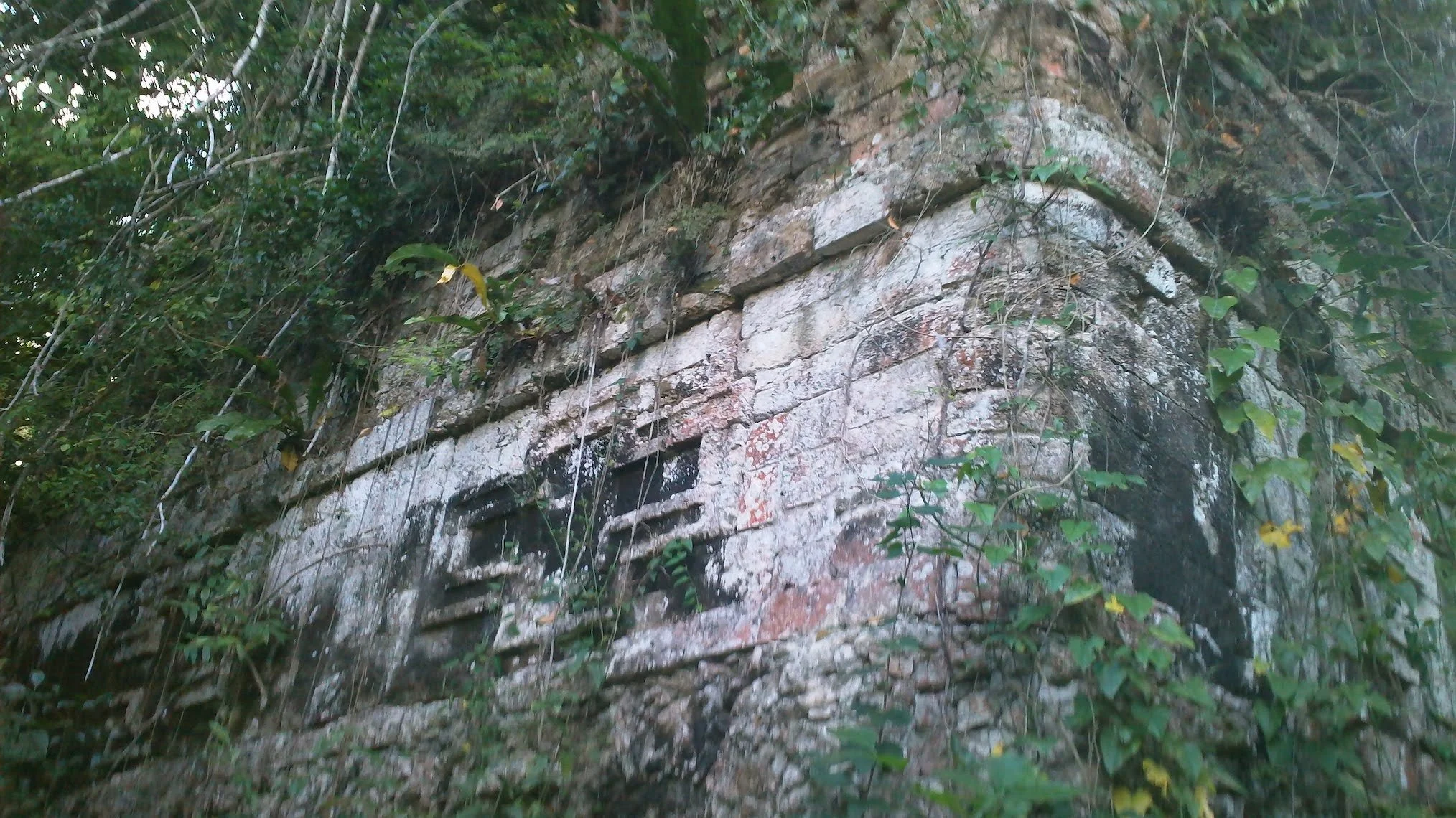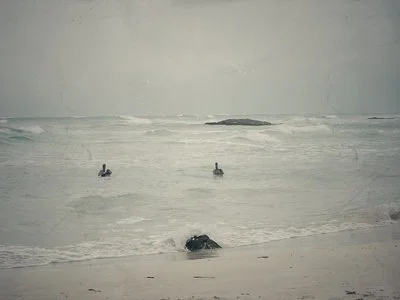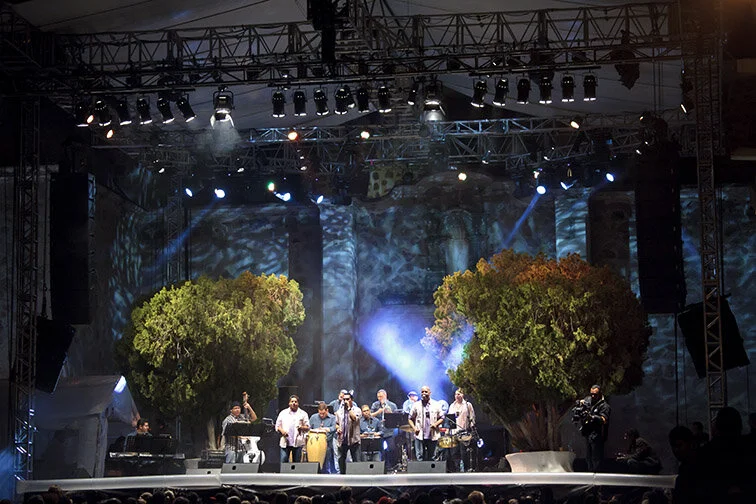After a restorative spa retreat in Ixtapan de la Sal, Karen Gershowitz ventures beyond the walls to discover Toluca’s breathtaking Cosmovitral Jardín Botánico—an art-and-nature marvel of stained glass and gardens—and Metepec’s vibrant traditions, street food, and festival spirit. Beauty, flavor, and memory prove the best souvenirs, found not on maps but in exploration.
All tagged Mexico
Into the Jungle
A visit to Calakmul Biosphere Reserve, a cultural and natural UNESCO World Heritage Site in Mexico’s Yucatán Peninsula, takes Carolyn Handler Miller deep into the Maya jungle where she discovers a vibrant ancient culture living intimately with their environment.
The travel writer’s dilemma
Travel writer Deborah Gray used the pause in travel of the past year to consider how the tourism industry can move forward more consciously and her role in the bigger post-pandemic picture as a traveler and journalist.
Finding My Mother in San Miguel de Allende
Only weeks after her mother’s passing, Laurie Gilberg Vander Velde traveled to San Miguel de Allende, Mexico, on a previously scheduled vacation. San Miguel was also the place where twenty-four years earlier her mother had sought refuge from grief and Laurie finds memories of her mother everywhere.
Locked Out in Mexico
An old lock breaks on the front door of a Mexican casita, trapping the cleaning woman and a high-strung woman inside with writer/illustrator Jan Baross locked outside. The fun really begins when the woman panics and jumps onto the neighbor's roof and practically the entire barrio becomes involved in the search for a locksmith to free the captives.
Temazcal Sweat Lodge in Cozumel
by Fyllis Hockman
I am sweating profusely. My pores are so overrun with liquid that I fear I will float away in a river of my own perspiration. Since I am molting inside a sweat lodge, I figure I can’t go very far. Temporarily reassured.
Fire, Candle, Drum, and Stones: A Sensory Experience
The first thing I heard were sounds. Were they cymbals? Was it thunder? What did they mean? Were they supposed to mean something? But I didn’t have time to ponder before the next sensory assault -- this time different textures caressing my bare feet -- gravel to burlap, wooden slats to smooth slate to soft rug. Were the others experiencing the same thing?
And here’s the rub. We were all blindfolded, one hand on the shoulder of the person in front of us, as we moved about our mini-jungle. At first, I felt disoriented, out of control, with the added annoying question lurking in the back of my head: I am a travel writer, how am I supposed to take notes? But our Mayan guide propelled me back into the moment by explaining that when our sight -– our main sense in relating to the world around us –- is cut off, the others senses are expanded. And I had better start paying attention.
by Maraya Loza Koxahn
I had been driving around in the dark for over an hour, lost in a town east of Mexico City, searching for the ‘love motel’. This might sound like a tantalizing adventure if I were with my lover but I wasn’t. I was with Bill.
What If We Didn't Go Home?
“So, when exactly are you coming home?” my father asked.
“I don’t know, Dad. Our visas allow us to stay in Peru for at least three months, then we’re thinking of heading on to Argentina and Chile...”
The broken and sputtering magicJack connection at the South American Explorers Club in Cusco broadcasted about every third word of our conversation, but the message that traveled down the steep stone streets of the ancient Inca capital and across the continents to the lush green lawns of Newark, Delaware, the college town I’d grown up in and where my parents still live, was crystal clear: We weren’t coming “home”.
The truth was, my husband, Hank, and I had no idea when, or if, we were going home. We didn’t even know what “home” meant anymore. We’d been winging it, temporarily inhabiting Mexico, Nicaragua, Ecuador, and Peru: itinerant and loose in the world in a manner that both worried and intrigued family and friends back home.
We were four thousand miles from our homeland, eleven thousand feet above sea level, south of the Equator where summer is winter, and living in a fourth-floor walkup without heat. Yet, life felt sweet and rich and fortunate.
Have you had your fill of winter? Are you yearning for a tropical getaway? Here's a contest to help.
In partnership with, Paradise Hunter, a TV show, vacation rentals and real estate company, this contest offers you the chance to win a vacation for four in Akumal, Mexico, on the Yucatán Peninsula 100 km south of Cancún. Paradise Hunter recently filmed in Akumal and is giving away a free week of living the good life.
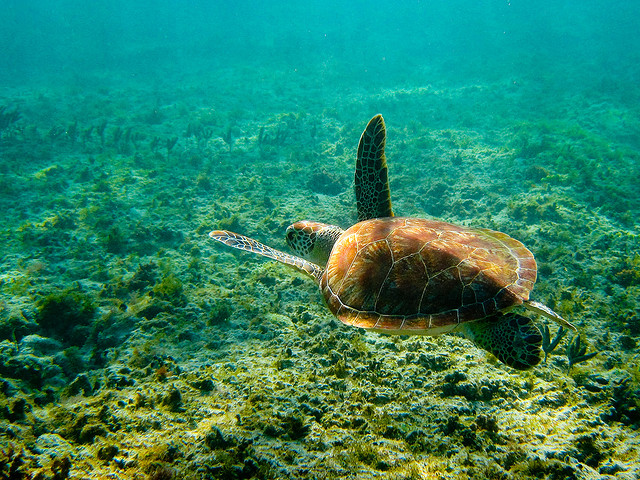
What's included?
One week in a luxurious oceanfront villa for four people.
A journey under the jungle into the magical world of cenotes.
Guided fly fishing in the Sian Ka’an Biosphere.
Some of the best culinary offerings on the Riviera Maya.
The Primeval Waters of Bahia de Ascension
On the first trip I made with my family to the Yucatan in 1973, tourism was virtually unknown. It was prior to the building of the Cancun airport and the only people who ventured down to this part of the world used cars or trucks on the little-traveled roads. Those existing roads were rarely paved once you got off the main two-lane highway.
The Ghosts of Alamos
story and photos by Paul Ross
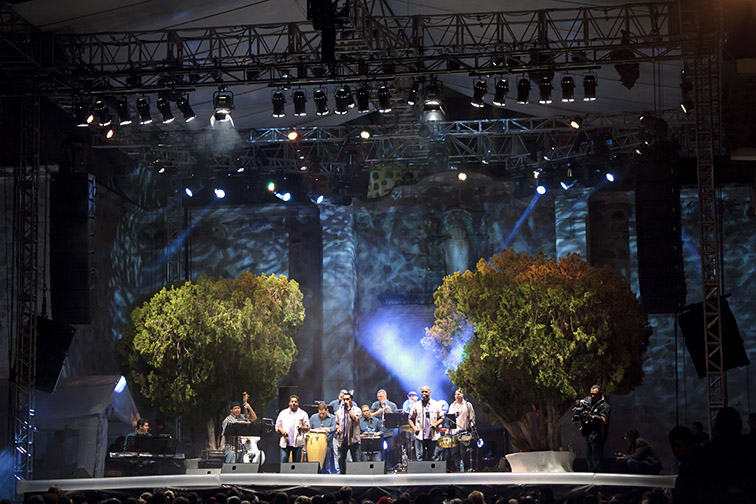
A Puerto Rican band rocks the house on one of Alamos' festival stages.Ever since I was a kid, I liked ghost stories. Not “the hook on the car door in lovers’ lane” or “the vanishing trucker” or any of the urban legends. I sought out the real thing: incidents that were chronicled in books by the likes of Jess Stern, with detailed footnotes and reports from reliable witnesses such as cops, soldiers and, my personal favorite, dumbfounded scientists who were “left at a complete loss for explanation.” Years later, “The X Files” mined similar territory but, by then, I’d moved far from any fiction into field research. I’d contributed to esoteric –yet rigorously grounded- publications like “The Fortean Times – The (British) Journal of Strange Phenomena.” I interviewed people who’d had supernatural encounters, personally photographed numerous haunted spots and even stayed in what was purported to be America’s most ghostly hotel. (2 nights: I saw nothing and left dispirited.)
The funny thing is, even if the prey is ghosts, when you’re actively hunting them, they’re nowhere to be found BUT, when you least expect it -
Recently, I was on assignment in Sonora, Mexico. I’d never been to the specific region and was looking for culture, music, cuisine, genuiness and exotica. I didn’t know I’d find my passion.
Leaving It All Behind
To the outside world we had a beautiful life. There we were, living happily with our children in our lovely suburban home. We had interesting friends. What would possess us to leave it all and hit the road? But that’s what we did, launching ourselves into points unknown in the big red truck we bought to replace the suburban station wagon. It also replaced the 4 bedroom 2-1/2 bath home with a cab-over camper that provided just enough space for five people to sleep. Only one person, even if it was a child, was able to walk about at a time.
What we had in mind was simply to begin our personal odyssey with the ultimate destination unknown. Anyone can do it. Despite the prevailing opinion, it doesn’t take much, just the initial decision to find another way. That’s how the travel plan began. Leaving all the details open allowed us to experience adventures that we never could have conceived of. That’s how the travel plan unfolds if you make the space. Our previous lives were now lost and gone forever and we had embarked on a new one.
This one ultimately took us from suburban south shore of Long Island to the sparsely populated area of the Yucatan Peninsula of Mexico. Not one of us spoke Spanish, but we ended up living there for several months, most of it on an isolated beach, on what was later to develop as Playa del Carmen.
I am married to a man who loves to compete. He is long, lanky and as strong as an ox. Much less competitive but also athletic, I have shared many challenges by his side for more than two decades—from running and cycling to rock climbing and skiing. While he strives to win, I just want to sweat, stretch and inhale some fresh air.
Every year since our wedding 21 years ago, we’ve celebrated our anniversary with a trip—like biking in Croatia, skiing in Park City, Utah, museum and pub hopping in London, and golfing in Hilton Head, North Carolina. As soon as each trip is over, I start thinking about our next springtime getaway—a rare chance for us to have extended time together, away from our three beautiful kids and the stresses of daily life.
 When it was time to plan last year’s trip, I was intrigued after hearing from a friend about Esencia, a small 29-room resort on Mexico’s Riviera Maya. I love Mexico not only for its food, climate, and culture, but it also makes for an easy trip—a non-stop flight from New York to Cancun, and then a one-hour drive.
When it was time to plan last year’s trip, I was intrigued after hearing from a friend about Esencia, a small 29-room resort on Mexico’s Riviera Maya. I love Mexico not only for its food, climate, and culture, but it also makes for an easy trip—a non-stop flight from New York to Cancun, and then a one-hour drive.
Once the beachfront estate of an Italian duchess, Esencia is a 50-acre white-walled property that looks out over the Caribbean. It is a peaceful oasis with two pools, a day spa that uses ingredients like juniper berries and rosemary grown in its on-site garden, and a welcoming open-air restaurant called Sal y Fuego.
But what really grabbed me was learning that Esencia offered yoga—every morning, free of charge, outside in the open air.
This was my chance. A rare opportunity for my point-scoring, lap counting, time-keeping husband to perhaps let down his competitive edge and try something that would greatly benefit his body—and soul.
CHIAPAS, MEXICO: Maya, Mother Nature, and More.
Discover Chiapas, Mexico, through three unique perspectives. Judith Fein explores Maya ruins, culture, and traditions with archaeologist Yolanda Ruanova, uncovering the ancient and contemporary Maya world. Photographer Paul Ross captures the faces and landscapes of Chiapas. Ellen Barone embarks on a backcountry equestrian adventure with Enduro Ecuestre. Experience history, culture, and adventure in Mexico’s hidden gem.
words and photography by Aysha Griffin
“Aren’t you afraid?” and “Isn’t it dangerous?” These were the consistent questions posed by friends and family upon hearing I had booked a trip to Mexico. From my standpoint, it was a matter of avoiding winter’s cold, pursuing Spanish language studies and visiting American friends in San Miguel de Allende, a picturesque colonial city located in Mexico’s central state of Guanajuato.
 San Miguel de Allende, MexicoWithout any fear I flew from Albuquerque to Leon-Guanajuato Airport, via Houston, avoiding any border violence issues, and a 90-minute shuttle bus ride delivered me to this established and renowned cultural enclave of ex-pats and snowbirds. But the question of danger and safety in Mexico is not an easy or simple one to answer.
San Miguel de Allende, MexicoWithout any fear I flew from Albuquerque to Leon-Guanajuato Airport, via Houston, avoiding any border violence issues, and a 90-minute shuttle bus ride delivered me to this established and renowned cultural enclave of ex-pats and snowbirds. But the question of danger and safety in Mexico is not an easy or simple one to answer.
There is violence in Mexico, as everywhere. I recall an Australian friend who, landing in L.A. for his first trip to the U.S., called to ask if he should buy a gun – a reasonable question given the FBI estimate of over 200 million privately-owned firearms.
Americans – with our recent history of internal terrorism (Oklahoma City), external terrorism (September 11th), intentional public shootings (Tucson supermarket), serial murderers, drive-by shootings, rapes and other domestic violence; with handgun murders a daily occurrence in U.S. cities, and the largest prison population in the world – are hardly in a position to point fingers at the dangers abroad.
However, there is something different happening in Mexico. At the core are not just anger, political intolerance, insanity and psychopathic behavior, but money and turf war power, with illegal drugs (primarily marijuana) as the medium.
Thirty years ago, when I lived and traveled in Mexico for six months, handguns were illegal and even the police were gunless. At that time, Mexico was an extremely safe place in regard to violent crime. Corruption, usually in the form of bribes to officials, was a known, accepted and non-violent interaction. That was two generations ago and the world has changed in countless ways.
words + photos by John Lamkin
Dani has a face that only a mother could love, but he doesn’t have a mother – he’s an orphan. Dani is a manatee, sometimes referred to as a sea cow. I guess if he had a mother she would think he was beautiful. The horny seafarers of earlier times thought manatees were beautiful. When seen in the ocean from a distance, they were mistaken for mermaids or sirens.
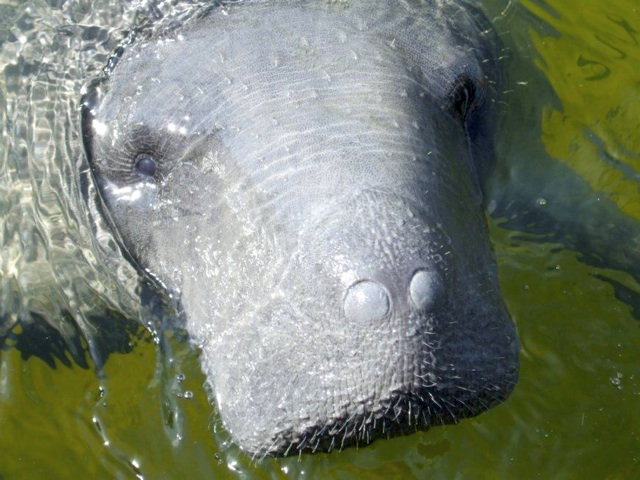
Dani was found by a couple of boys, four days old with an injured flipper – caught in the mangrove roots. He was left an orphan, unable to leave this annual birthing lagoon with the other manatees. The lagoon lies just off the Caribbean Bay of Chetumal in the south of Mexico’s Yucatan Peninsula. The villagers took him to Chetumal to have his wounds attended. Once treated, the state wildlife department decided to return Dani to the lagoon and put him in the care of the village until he recuperated. Well enough to swim, he was released to return to his manatee family, but he didn’t want to go.
I just began the book ‘Life is a Trip’ by Judith Fein. What an inspiration. Stories with heart, just begging the questions: Could I write about a few of my recent experiences? Do I really want to try? And would anyone really care?
My introduction to writing began with a Spiritual Writing Workshop in the Yucatan several years ago, led by none other than Judith Fein. To be honest, I hated writing. But that trip gave me something to write about. Judie actually encouraged us and made writing fun. Is that possible? I actually began to enjoy trying to piece together my thoughts into a cohesive, semi-understandable story. And so, with that crude introduction, I continue.
 photo by Stephen Poff via Flickr (common license)I have begun a mid-life journey, unexpectedly. For many years, I have taught children who struggle in school, offered workshops on learning disabilities, was even on national TV and radio, had a wife of 30+ years, raised a wonderful family, bought several homes in the suburbs. You would think I was leading a fulfilling life. I did all the proverbial right things. Yet, I was bored, frustrated and angry. Something was missing. I realized that I found the way Americans interact and connect shallow and I began to question who I was. What do I have to offer? What were my gifts and skills? And what do I really want to experience out of life and people? I wanted something real and authentic.
photo by Stephen Poff via Flickr (common license)I have begun a mid-life journey, unexpectedly. For many years, I have taught children who struggle in school, offered workshops on learning disabilities, was even on national TV and radio, had a wife of 30+ years, raised a wonderful family, bought several homes in the suburbs. You would think I was leading a fulfilling life. I did all the proverbial right things. Yet, I was bored, frustrated and angry. Something was missing. I realized that I found the way Americans interact and connect shallow and I began to question who I was. What do I have to offer? What were my gifts and skills? And what do I really want to experience out of life and people? I wanted something real and authentic.
And then Cabo San Lucas, Mexico, came into my life. Originally it was just a trip, a getaway to a beach paradise. But something in me yearned to find something real. I hunted the Internet and happened to find a children’s daycare center there and a boy’s orphanage, and in-between playing volleyball, getting exceedingly drunk on the beach, wondering what I was doing at a posh Cabo resort, where people seemed like shadows passing each other, I became a clown. Just like that. I wanted to visit the daycare center and orphanage but didn’t just want to walk in and say: “Hey kids, I’m here." So I pondered: How could I relate? How
words + photos by John Lamkin
Cora Amalia, the president of the municipality, affirmed the stories I’d heard for a while. There was a “lost” Maya city in the nearby jungle that rivals Tikal in Guatemala and has a pyramid larger than the one at Palenque in the state of Campeche.
“When can I go there?" I asked the government tourism officials. “Only when you get permission from INAH (Instituto Nacional de Antropología e Historia),” was the answer, “And you can’t go now because the jungle roads are too muddy. You must wait for the dry season.”
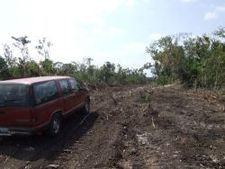 Well, the dry season came. We applied for and got the INAH permit and set off on the adventure – seven of us in Luis’ Suburban.
Well, the dry season came. We applied for and got the INAH permit and set off on the adventure – seven of us in Luis’ Suburban.
Our crew consisted of Luis Tellez, professional guide and photographer and his wife Leti, myself and my significant other Susy, two expats that lived locally and had done some research on the city, and don Millon a 90-year-old farmer who had worked in the area as a chiclero, one of the men that harvested the chicle for making chewing gum, and who had visited the ruins in his youth.
We located the turn-off from the paved road that led to a small Maya community of a few traditional thatched huts. We presented our permit to a Maya woman who was the designated caretaker. She read the permit and then herded her family out to be photographed by us.
New Life in the Yucatan
words + photos by Suzanne Marriott
When my husband, Michael, died on January 1st, 2006, I felt as if I had died, too. The light went out of my life. It was as if I were a candle and he were the flame, and his last breath had blown out that flame and left me alone in the dark. 
Yet, for some reason unfathomable to me, my life went on, though I saw no reason why it should. No longer able to make sense of my world, I began to rely more and more on my intuition.
A little over a year after his death, in March of 2007, I was sitting on my living room couch, reading my copy of Spirituality&Health magazine. Suddenly, an announcement for a workshop on travel writing jumped off the page. I’d always loved to write and to travel, and here was a way I could do both. The workshop was to be held in the beautiful but “undiscovered” southern Yucatan peninsula in Mexico near Belize. There was no reason in the world why I shouldn’t go, I thought to myself. Did I dare? Did I have the energy? Probably not, I decided. This was crazy.

